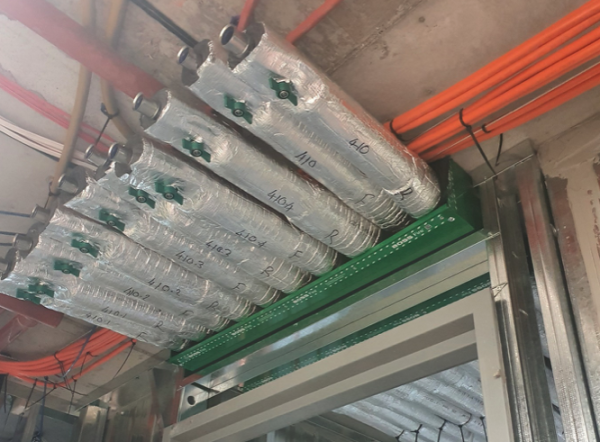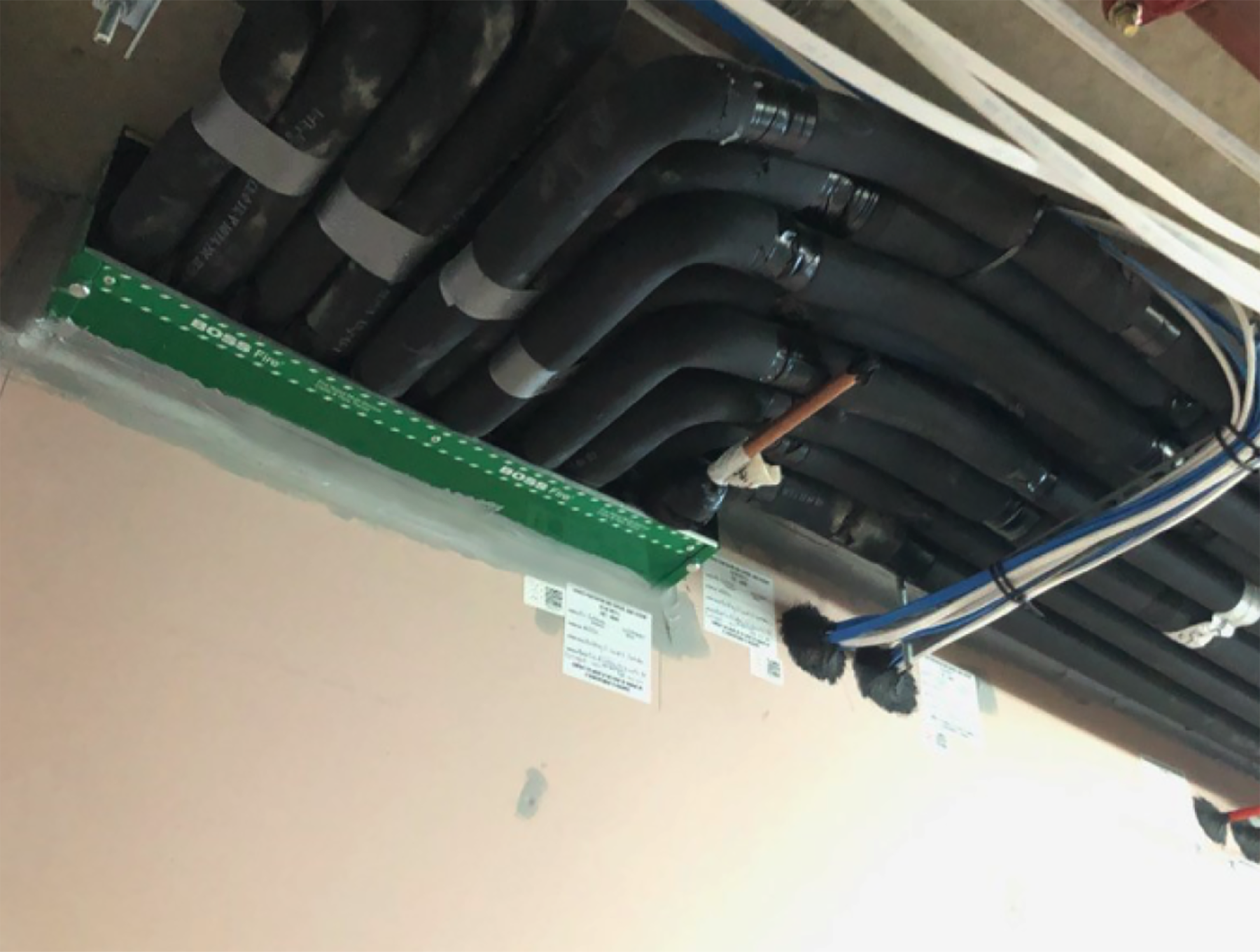HVAC Service Bundles: Saving Space and Making Compliance Easier.
Specifying multi-service bundles which have been tested for compatibility with acoustic lagging and thermal insulation can help simplify compliance.
The NZBC continues to evolve. With each update we see it call for greater thermal values on mechanical/HVAC systems. Whilst this has obvious performance benefits to the system on how economical it performs, there are some knock-on effects in other areas of building compliance relating to fire.
When it comes to passive fire treatment of pipes and cables passing through fire rated walls and floors, the New Zealand Building Code refers to two options when it comes to compliance. The first being identical with a prototype assembly of the service, building element and protection method which has been tested in accordance with AS4072.1 and AS1530.4 and has achieved the required FRR or differ from a prototype assembly of the service, building element and protection method in accordance with Section 4 of AS4072.1. In basic terms the first option means it must be identical to the tested system, the second option will generally refer to variations from a tested system that have been documented by an IANZ or NATA approved laboratory based on one or more tests whereby the scope allows for variations from the original tested system.
How do increased thermal values on mechanical piping affect the firestopping you might ask? If using the first path to compliance, thicker lagging on a copper pipe than was originally tested would mean that the system once used to firestop this pipe may no longer be compliant as the lagging may differ to the original tested system. In the case of the second option of compliance, thicker lagging on the copper pipes may still be ok if the AS4072.1 compliant fire assessment uses words like “minimum thickness” or refers to a specific maximum thickness which is preceded by words like “up to”. This is an important detail to look out for when specifying a system.
What else can be affected by new thermal values? We have seen more and more different types of materials being used for lagging on mechanical copper pipes. As the call for higher R-Values continues, manufacturers are looking for efficient ways to achieve performance. Black nitrile rubber products are no longer the only options with many other brands entering the market with materials such as cross-linked polyolefin. When it comes to the path of compliance, what does the test report or fire assessment refer to when it comes to the lagging type? Does it refer to a specific brand? Or does it refer to specific performance requirements of the lagging type? Look out for systems that refer to multiple brands or materials with specific performance criteria for greater versatility.
The next issue to arise for higher R-Values is related to space. More and more services are running throughout commercial and residential buildings, often the only room for these services to pass from one fire compartment to another is above a door head into an apartment or riser cupboard or passing through a floor slab in a riser shaft. Traditional passive fire treatments have commonly called for each individual pipe or cable to pass through its own aperture and maintain a minimum of 40mm between each aperture. It can become increasing difficult to fit so many services in the one area and maintain the correct separation in these small areas as the lagging is getting thicker, meaning that the diameter of the pipes gets bigger and bigger.
Fortunately, there are a wide range of products that can help resolve these issues. The team at BOSS develop their systems based on years of experience ‘on the tools’. So when it comes to product development they look for versatility and simplicity.

One option is the FireMastic-HPE, a high pressure exerting intumescent fire sealant perfect for mechanical service bundles. For many years the ‘HPE’ has been able to bundle A/C Paircoil with power and control cables, along with a condensate drain or conduit. Recent testing has seen a whole new range of approvals on thicker pipe lagging, different types of pipe lagging and more pipes through the one aperture making it an incredibly versatile fire sealant for mechanical services.
Multi-service transits such as the BOSS FyreBox continue to improve the way multiple services can be treated through one aperture. Not only does the FyreBox enable large bundles of services to all go through one simple device, but the extensive product testing on different types of pipe lagging has seen the range of approved lagging recently increased. Whilst various brands of insulation are directly referred to in the certification it also provides options for lagging types that meet minimum performance criteria. (This comes in handy when lagging manufacturers can often re-brand the same product under a different name and distributer). The BOSS FyreBox certification also generally calls for a minimum thickness of lagging relating to a specific FRL making it easy to maintain compliance with one product across a multitude of systems as pipe lagging thickness varies. Now with larger diameter copper than ever before the BOSS FyreBox continues to provide innovative solutions to common site problems.

